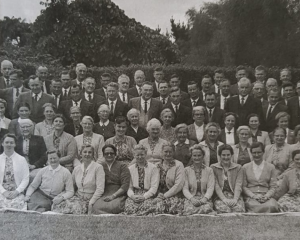New Zealand's jobless rate fell to a three-year low in the first three months of the year as the employment rate grew for the first time in four quarters, fuelled by demand for workers in Canterbury.
The unemployment rate fell to 6.2 per cent in the first quarter, the lowest since March 2010, from a revised 6.8 per cent three months earlier, according to Statistics New Zealand's Household Labour Force Survey.
The number of people in work climbed by 38,000, or 1.7 per cent in the quarter to 2.23 million, the biggest jump since the series began in March 1986, while the participation rate improved to 67.8 per cent from 67.2 per cent.
The figures, though notoriously volatile, show a stronger jobs market than economists had expected.
The jobless rate was expected to be 6.8 per cent, according to a Reuters survey of 12 economists. Jobs growth was forecast to be 0.8 per cent quarter on quarter. The participation rate met expectations.
Much of the strength was driven by Canterbury, where the jobless rate tumbled 21 per cent to 4.3 per cent and the participation rate and employment rates climbed. Excluding Canterbury, which is rebuilding from its disastrous earthquakes, the labour market was more subdued, Statistics New Zealand said.
Westpac Bank economist Dominick Stephens said today's survey " gave an unusually clear signal that the labour market has improved. The data was much stronger than expected."
"All indicators pointed in the same direction, and the detail confirmed the strong headline," said Stephens. " Employment was up 1.7 per cent, the unemployment rate fell from a revised 6.8 per cent to 6.2 per cent. The participation rate also rose, from 67.2 per cent. Full-time employment was up very strongly. Hours worked rose a wild 3.2 per cent."
Stephens said the labour market appeared to have improved outside of the quake-affected Canterbury region. The NZ ex-Canterbury unemployment rate fell from 7.2 per cent to 6.5 per cent.
"This contrasts with last year, when the signs of labour market improvement were pretty much confined to Canterbury."
While the "signal" coming from the data was clear, it did not mean it was correct, said Stephens, since the household labour force survey had "thrown some wild signals in recent years."
He recommended paying attention to a wider range of labour market indicators, including but not focussing on the HLFS.
"The wider range of labour market indicators suggest that the New Zealand labour market was roughly flat in 2012, but has improved modestly in the March quarter of 2013."
Stephens said today's numbers were important for the Reserve Bank.
"In the September quarter of last year, the unemployment rate leapt unexpectedly to 7.3 per cent. The Reserve Bank, alongside most other economists, suspected that was probably a rogue signal. But nobody could be absolutely certain. The Reserve Bank fretted about the possibility that the labour market really was getting weaker. Today's data strongly discounts that risk. The central bank is now free to focus on the other factors affecting inflation - the Canterbury rebuild and rising house prices on the upside, Government austerity and the high exchange rate on the downside."
The data follows figures this week showing private sector ordinary time wages rose 0.4 per cent in the first three months of the year from the fourth quarter of 2012, and gained 1.8 per cent from the first quarter last year.
While this week's data shows a bounce back from a surprisingly weak fourth quarter, there have been some high-profile job cuts that underline that the labour market is still tepid. The employment rate is still down 0.3 percentage points over the year and well below levels seen before the 2008 and 2009 recession, the department said. The participation rate is down 0.8 percentage points in the year.
Fonterra , which imposed a hiring freeze in February, said this month it may eliminate up to 300 jobs as it seeks annual cost savings of $65 million a year, adding to $60 million of cost cutting already targeted for 2013. Solid Energy yesterday announced plans to cut 105 jobs, adding to 440 already shed as the unprofitable state-owned coal miner. Tait Communications announced restructuring that could cut 70 workers.
Today's figures showed some improvement in employment for young people. The jobless rate for people aged 20-24 fell 4.1 percentage points to 10.9 per cent, the lowest since the third quarter of 2009.
- BusinessDesk












